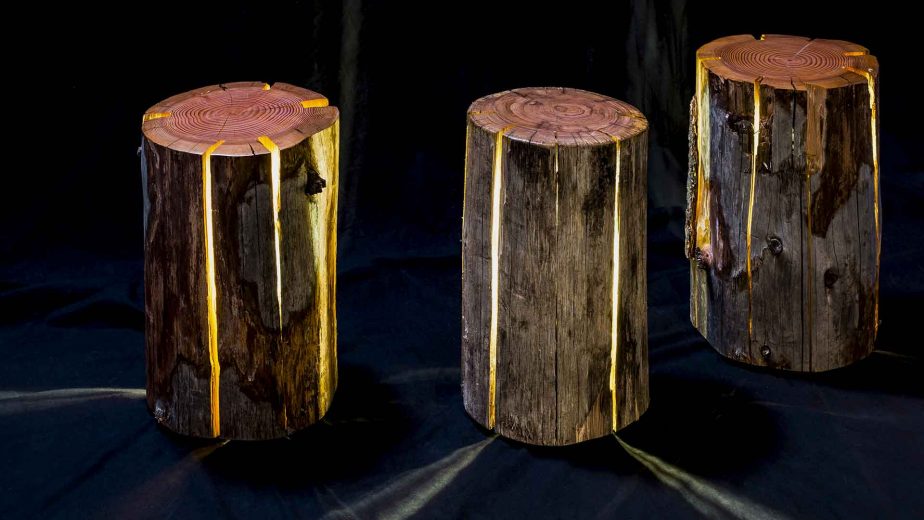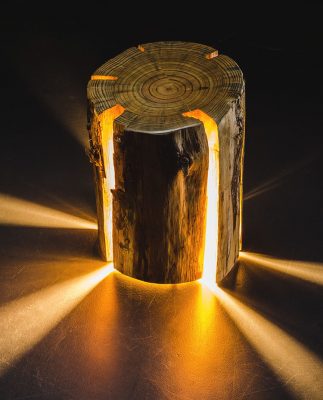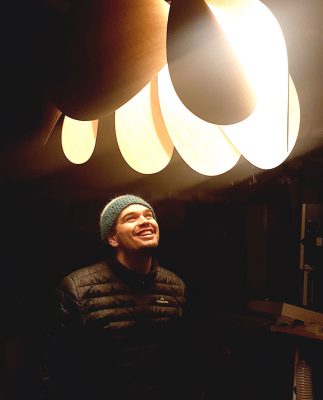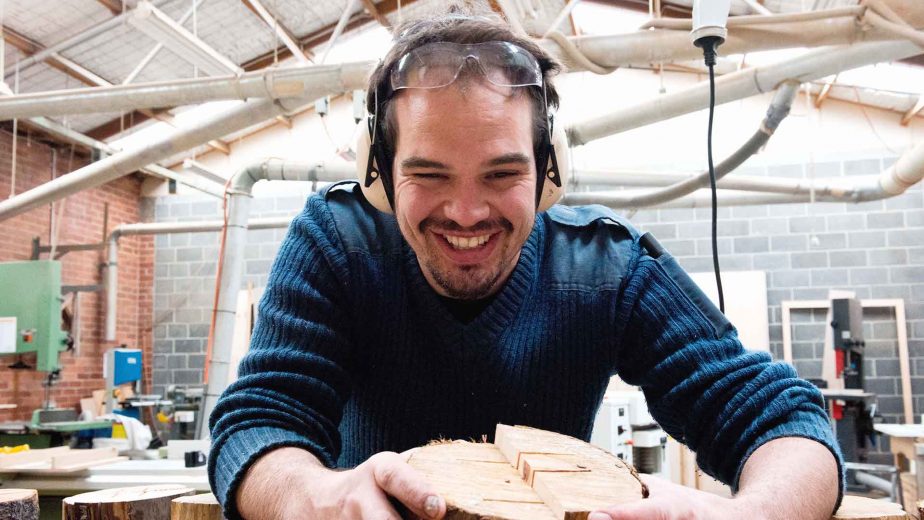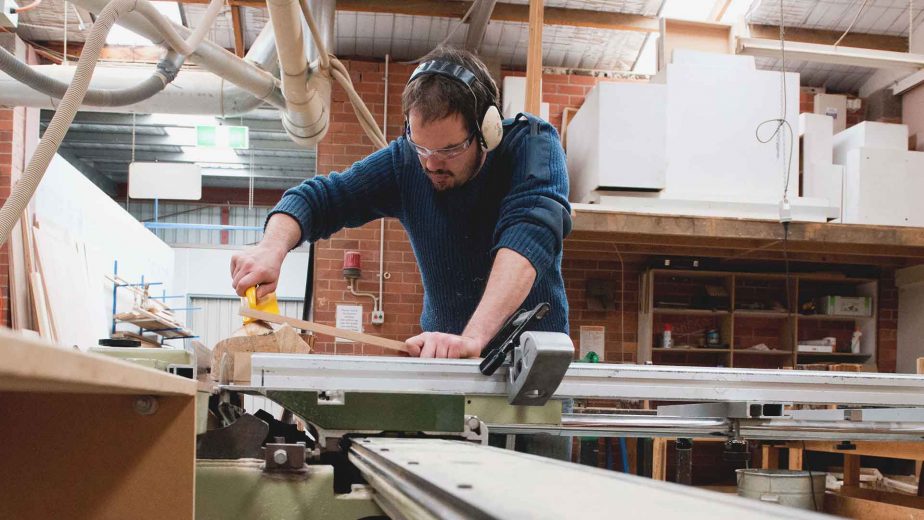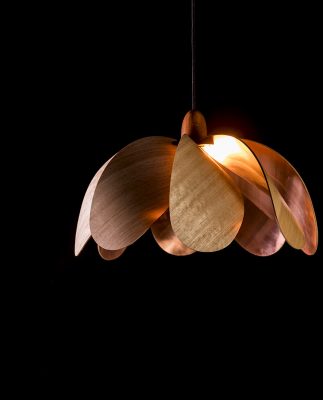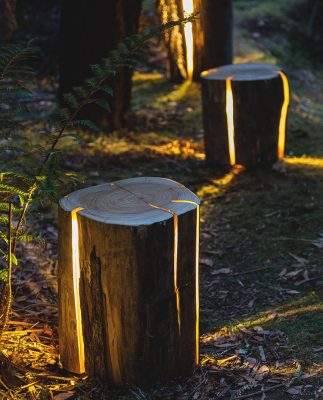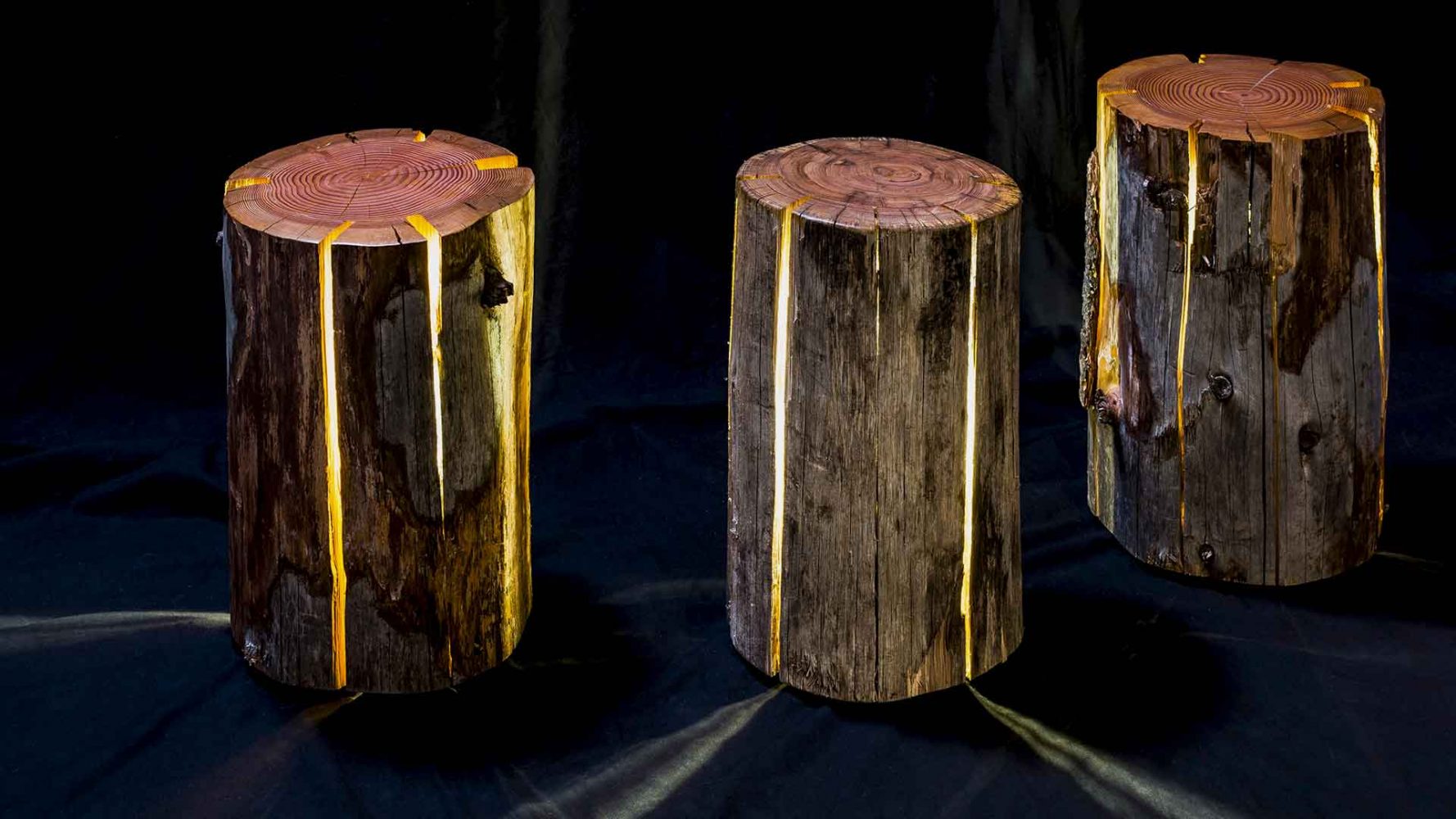
Duncan Meerding’s Light from Within
Cracked Log Lamp brings a new shine to the conventions of design.
When we first discovered ‘Stump’, it was the originality and irony of the piece that lured us learn its story. We soon found the background to Duncan Meerding’s designs was more interesting than we ever imagined.
Not only do his designs encourage us to rethink the notion of conventional beauty in nature, he, as a designer challenges the perception of industrial design as a visually dominant discipline.
Duncan had an interest in design and woodwork from a young age but never the complete confidence to pursue it as a career.
Then in 2005, Duncan lost 95% of his vision, becoming legally blind.
His aspiration to design grew greater than ever, leading him to complete a specialised woodworking course in Melbourne to relearn how to use tools safely, before completing studies in design at the University of Tasmania.
Duncan’s design ethos is driven by celebrating the simplicity of nature. “Nature inspires us and relaxes people. A lot of my designs are inspired by the raw and rugged environment,” Duncan says.
His award-winning ‘Cracked Log Lamp’ came from the idea of finding beauty in pieces of weathered wood that are considered waste and would have otherwise been burnt. “Whimsically, I thought of what would happen if you force light through the cracks in the stumps. Each crack in the wood is unique and imperfect, just as they are in nature.”
The cracks and imperfections of the wood become its best assets when the core is hollowed and filled with LED light for this iconic piece. ‘Stump’ is a progression of the design which removes the need for a power source, enabling both indoor and outdoor usage as a light, stool or side table.
Another design, ‘Propeller Pendant Light’ takes form and inspiration from the everyday things we see in nature; smooth leaves of a tree or the soft petals of a flower. The aim is to bring organic shapes into a modern living context. Or, to bring the outside, inside.
Possibly one of the most inspiring and interesting aspects is the process Duncan takes to his pieces. With limited vision, there is no room for trial and error. Rather, the development of every piece involves detailed internal visualisation, considering both the form and the full production process before he picks up a single tool.
With Stump, for instance, touch becomes the most important sense for exploration for each piece of wood to learn its finest details. This may take a while but encourages personality and uniqueness in every piece.
Duncan has collected many awards over the last ten years, including last year’s Best Floor Light at the London DARC Awards, as well as a place at the Venice Design Biennale. His work can be found in Google’s offices in Singapore, and the Choctaw Cultural Centre in the USA as well as featured in projects from Switzerland and Sweden to Denmark.
Recently he was in London, working with the DisOrdinary Architecture Project and their Architecture Beyond Sight Program that aims to increase the participation of vision-impaired students in design. “I had a lot of luck in my life that gave me the opportunities and led me to where I am, but I want to take that luck out of it. There are a lot of attitude barriers to get through, but people should know that we can design and create as well as anybody,” he says.
